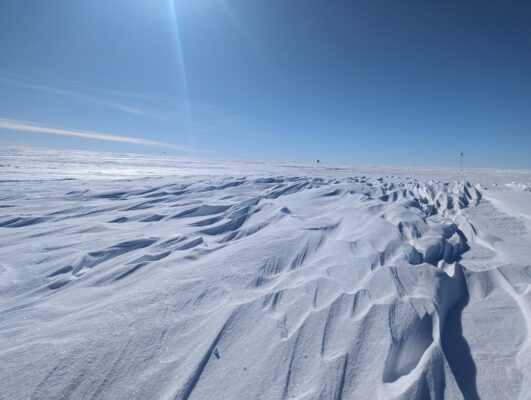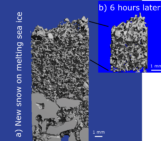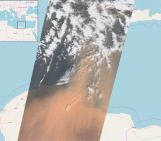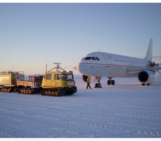
Sastrugi are significant features in glaciology, providing valuable insights into wind patterns, snow dynamics, and surface processes. So although at first sight they may be easy to walk over (quite literally), their patterns and features can tell us more than you might think, so next time take a moment to look and see the story they have to tell…
The Song of Sastrugi
The wind’s icy breath
Sweeps across the snow
Its whisper leaves a mark
In patterns that it sows.The snow it hears wind coming
It eagerly awaits
Without wind, snow is lifeless
Still, in this cold place.Now snow and wind entwine
A dance, a meeting brief
They leave their mark so clearly
Proof of their mischief.Ridges rise defiant,
Grooves and shadows lie
A moment forever captured
Beneath the winter sky.The story of sastrugi
A sculpted, windswept sea
The remnants of a meeting
Etched for all to see.– Emma Pearce
A little bit more info
Sastrugi are sharp, irregular grooves or ridges formed on a snow surface by wind erosion. These features are typically found in our polar regions or on high-altitude glaciers and they can vary in size from a few centimetres to over a meter in height and can be several meters long.
The features form when the wind erodes the snow, carving out troughs and depositing the snow in ridges. Over time, the wind-packed snow hardens, making the sastrugi more pronounced and if you’re driving a skidoo, more dangerous!
Glaciologically, sastrugi are important for a few reasons.
- Wind direction and patterns. They can tell us about past and present wind direction and strengths.
- They give an indication to patterns of snow deposition and ablation processes.
- Sastrugi pose challenges when doing fieldwork for researchers and equipment (such as snowmobiles and snow planes) due to their rough, uneven surfaces. Using their orientation from satellite data can help plan fieldwork and have a better constraint on weather conditions.
Edited by Maria Scheel




